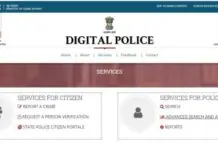India has joined Canada, the United States, Brazil, France, Italy, Japan and many other countries in making e-passports. Where chip-based e-passports are used. To enhance border security and prevent identity fraud.
The Government of India introduced chip-based e-passports under the Passport Seva Program 2.0 in April 2024. It was first started as a pilot project in many cities like Nagpur, Goa, Jammu, Bhubaneswar, Jaipur, Chennai, Hyderabad.
What is e-passport?
E-passport is also called electronic or biometric passport. It is more secure and technologically advanced than the traditional passport. It has a microchip in which the biometric information of the passport holder such as photo, fingerprints and other information is stored. No one can make a fake passport or tamper with it with the chip attached to it. Apart from this, the immigration process is also faster with e-passport. The technology of e-passport in India has been developed in collaboration with IIT Kanpur, National Information Center, India Security Press and Ministry of External Affairs.
Benefits of e-passport in India
1. E-passport has high security as it is not possible to forge due to biometric data.
2. E-passport will also save scanning time at the gate.
3. E-passport is preferred in most countries.
4. The information in the chip is permanently locked.
Eligibility for e-passport in India
Any Indian citizen who is eligible for a normal passport can apply for an e-passport. Those who already have a passport can also apply for it.
Step by step process to get e-passport
Step 1: Register
First of all, you have to go to the passport service portal www.passportindia.gov.in. Where you have to click on New User Registration and enter your name, email and mobile number. After this, you will get the credentials with the help of which you can login again.
Step 2: Fill the application form
After successfully logging in, you have to click on Apply for Fresh Passport / Re-issue Passport. After this, you have to download the e-form and enter your personal information like name, date of birth, address and other information in it.
After filling all the information, upload the form in XML format. Take special care that PDF forms will not be accepted.
Step 3: Upload documents
Along with the application form, you will also have to upload some documents. Like
– Class 10th mark sheet or Aadhar card for date of birth proof.
– Aadhar card, voter ID or PAN card for identity proof.
– Electricity bill, ration card or rent agreement for residence proof.
– Birth certificate or old passport for proof of nationality.
– Recent passport size photo for biometric photo, which should be taken in a period of 6 months.
Step 4: Payment and Appointment
After uploading the application form and all the required documents, you have to pay the fees. Make the online payment through credit/debit card, net banking, or SBI challan. After making the payment, book an appointment by selecting your nearest Passport Seva Kendra.
Step 5: Visit the Passport Seva Kendra by taking an appointment
You will have to take all the original documents, appointment receipt and application reference number to the passport service center. The application process will start after verification.
Step 6: Delivery of Passport
If you apply normally, it may take 7 to 21 days for processing. The passport will be delivered to your address through India Post. You can track the passport seva portal status through your application reference number.













